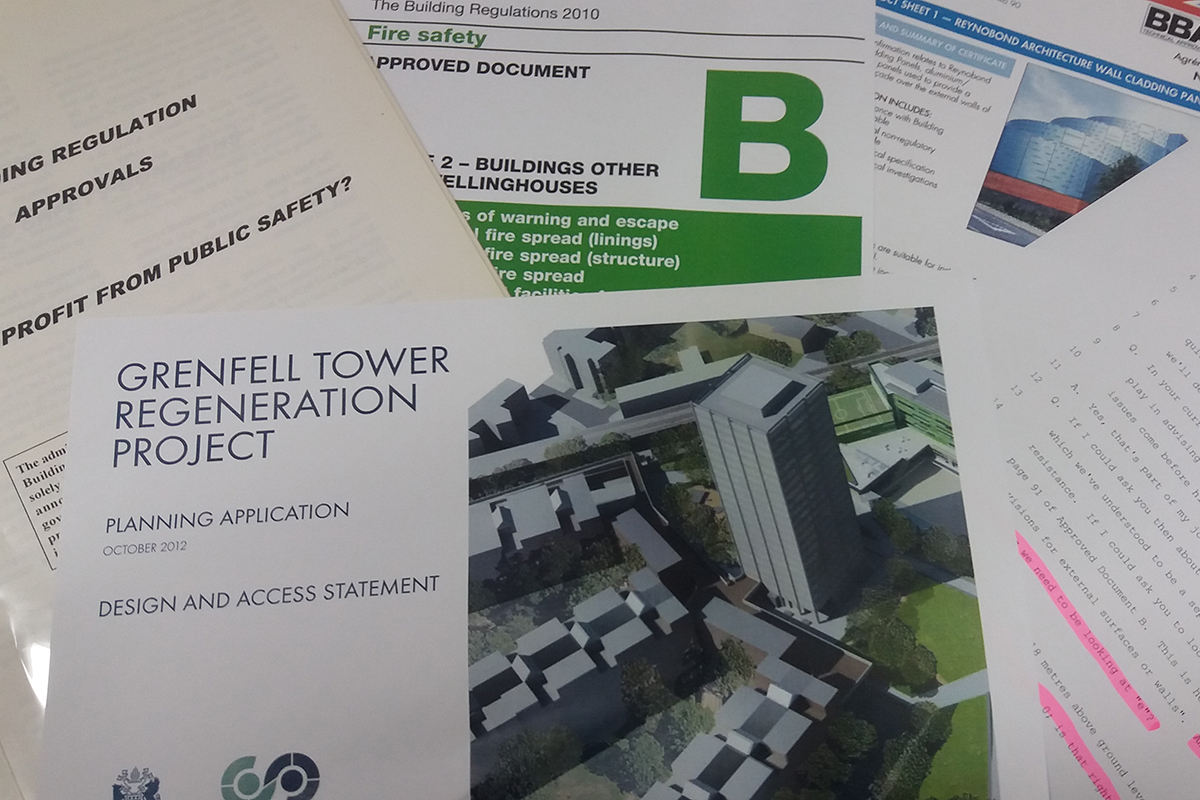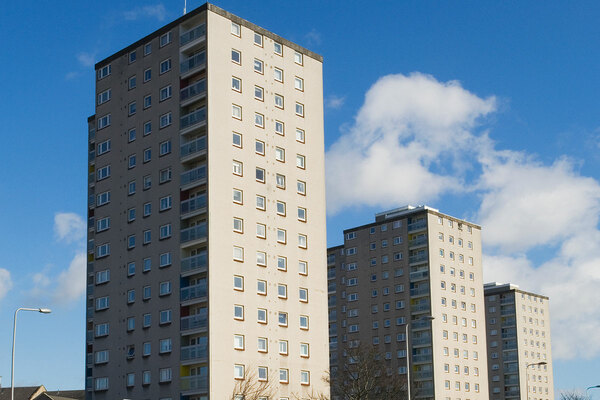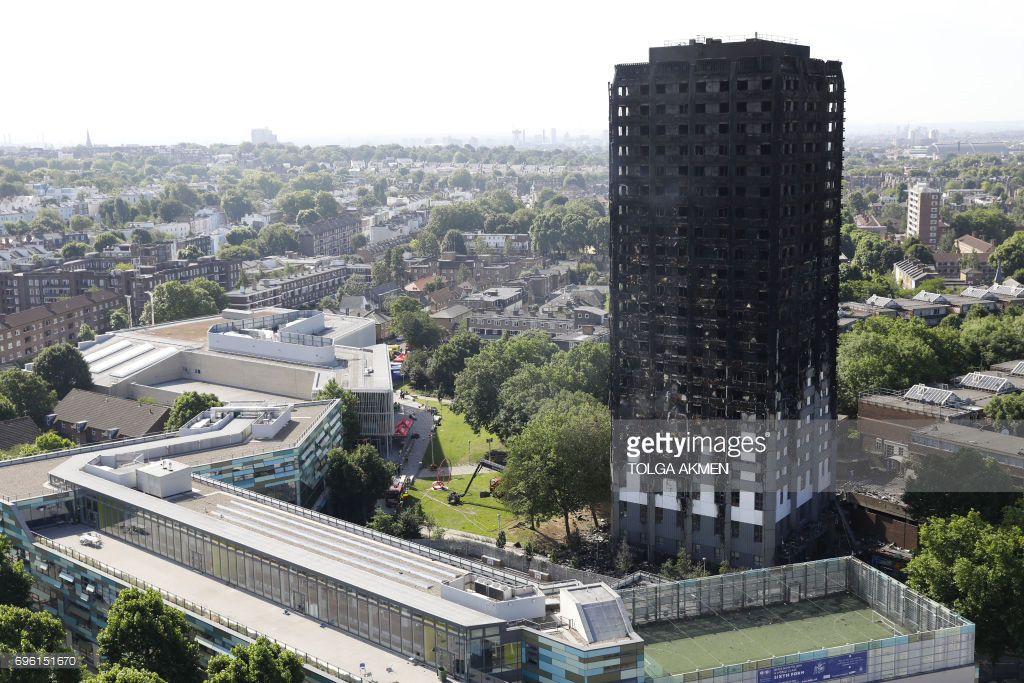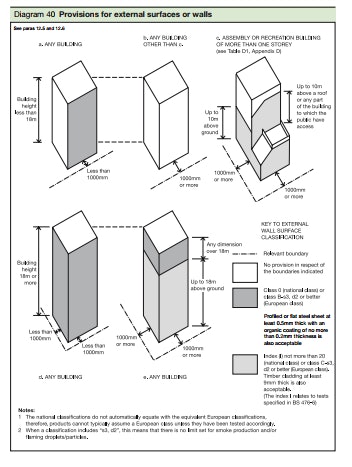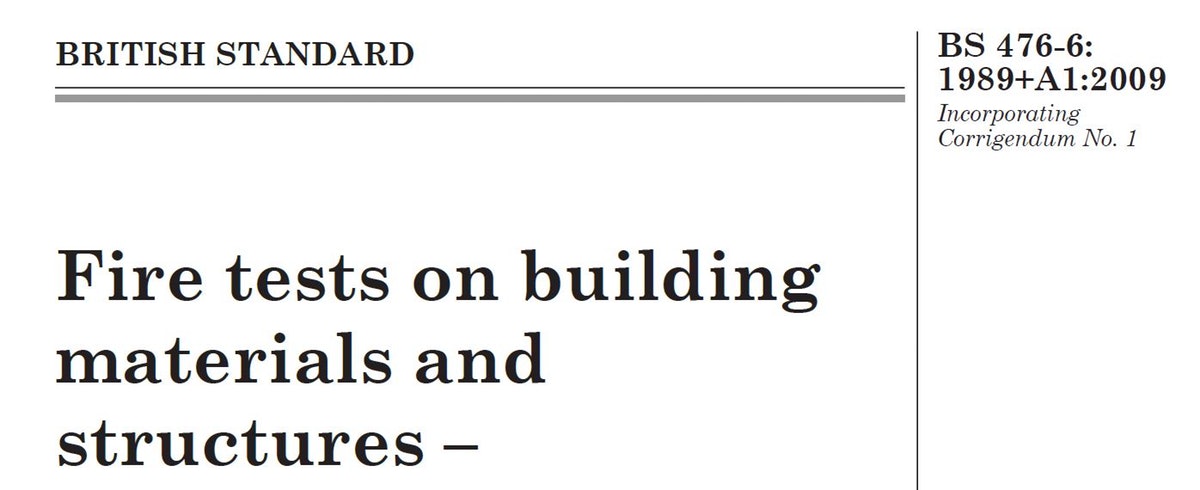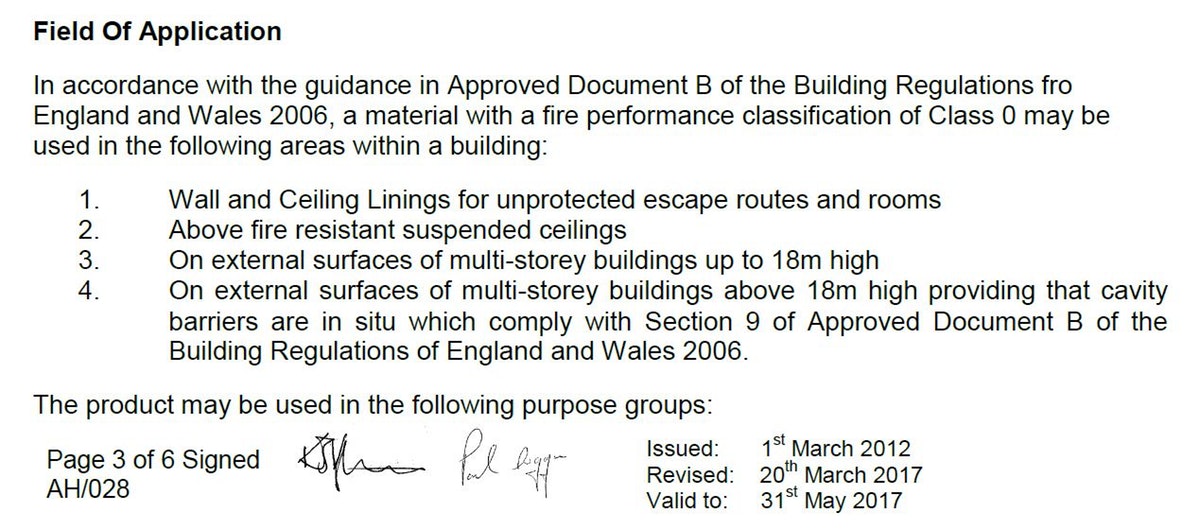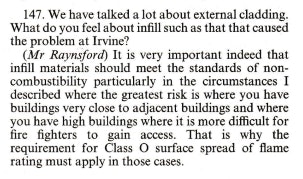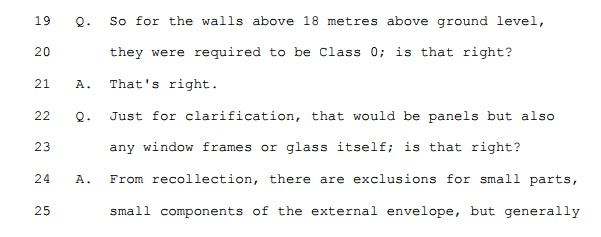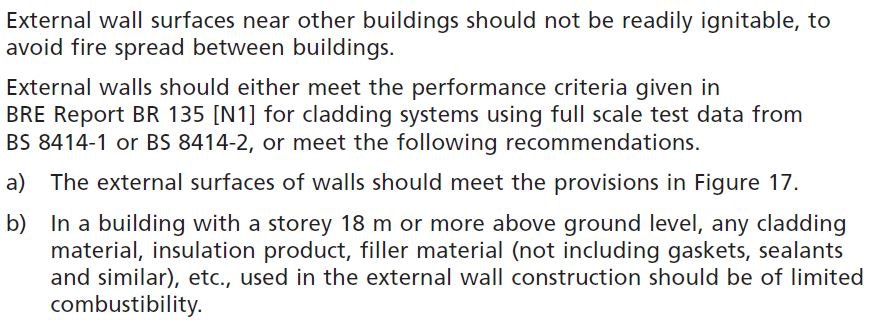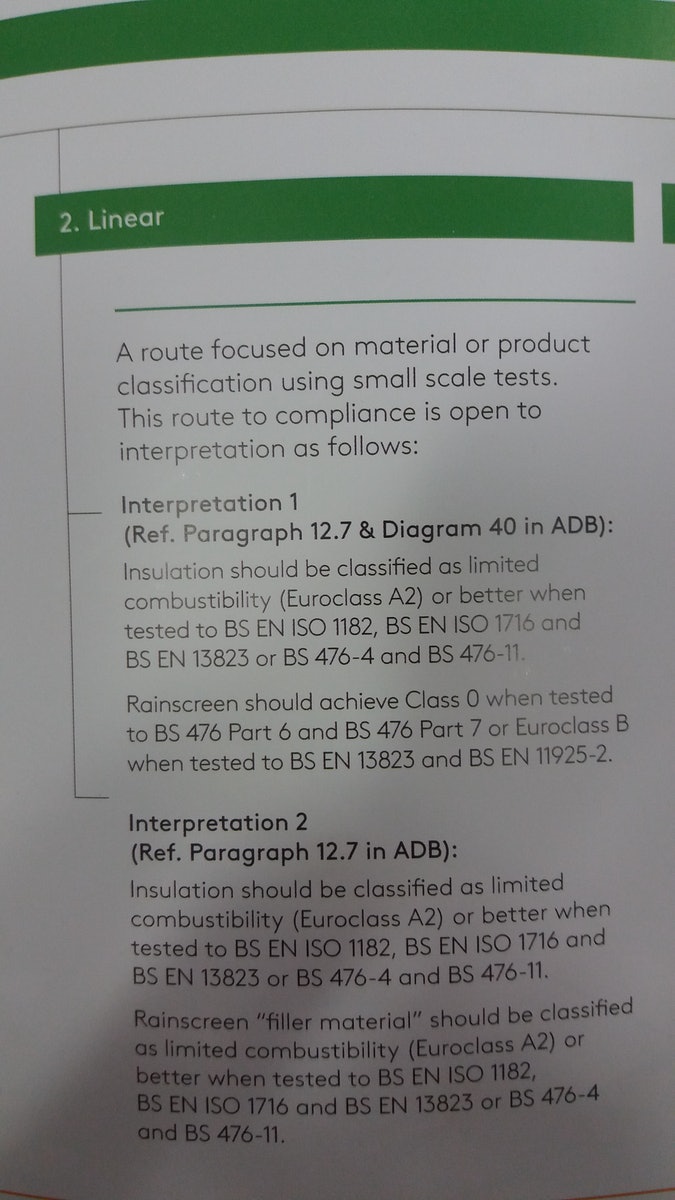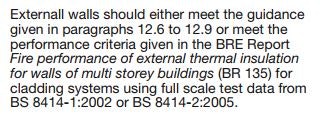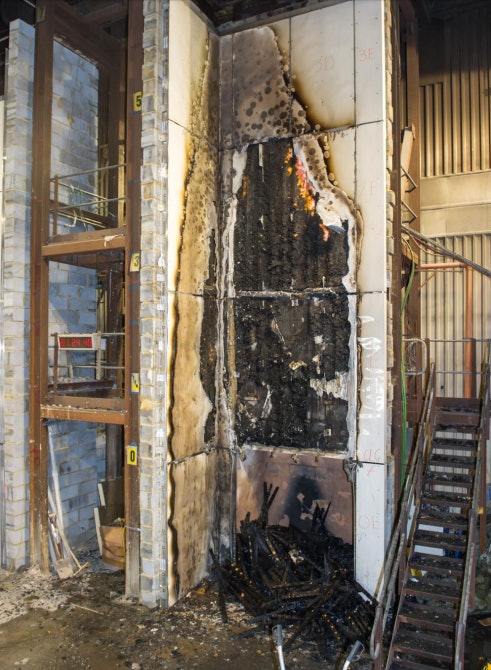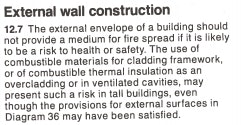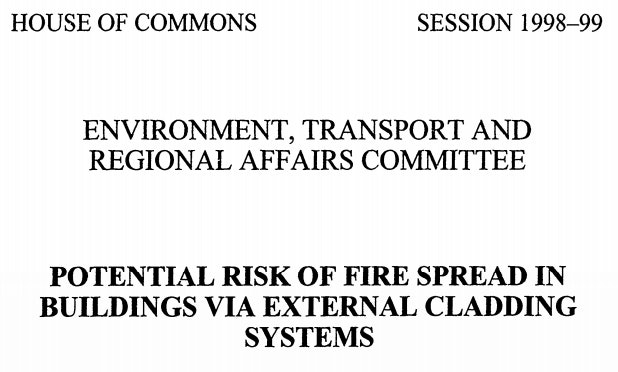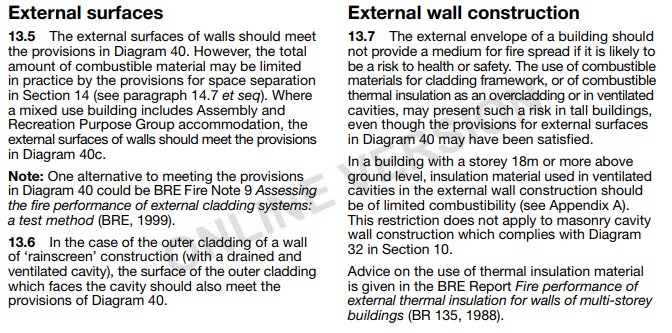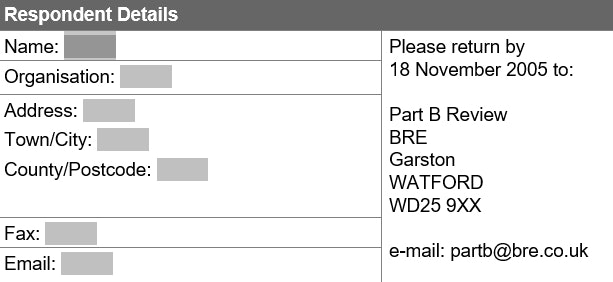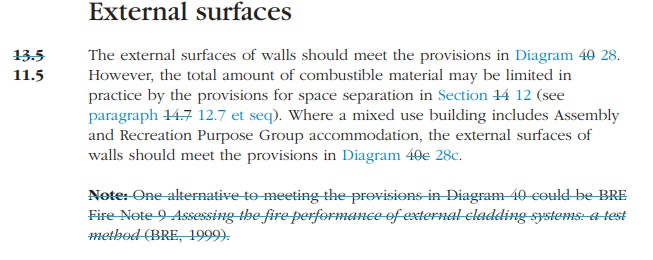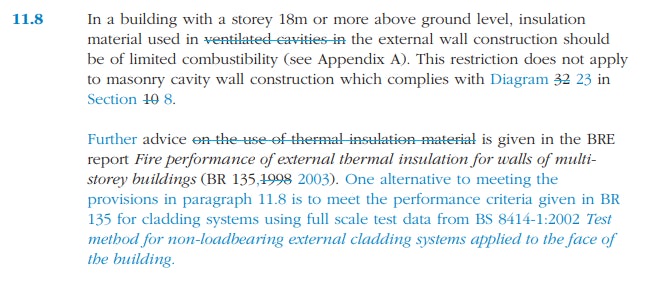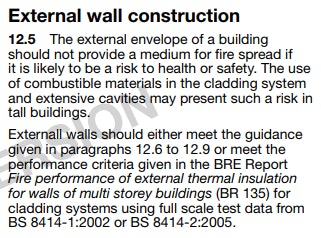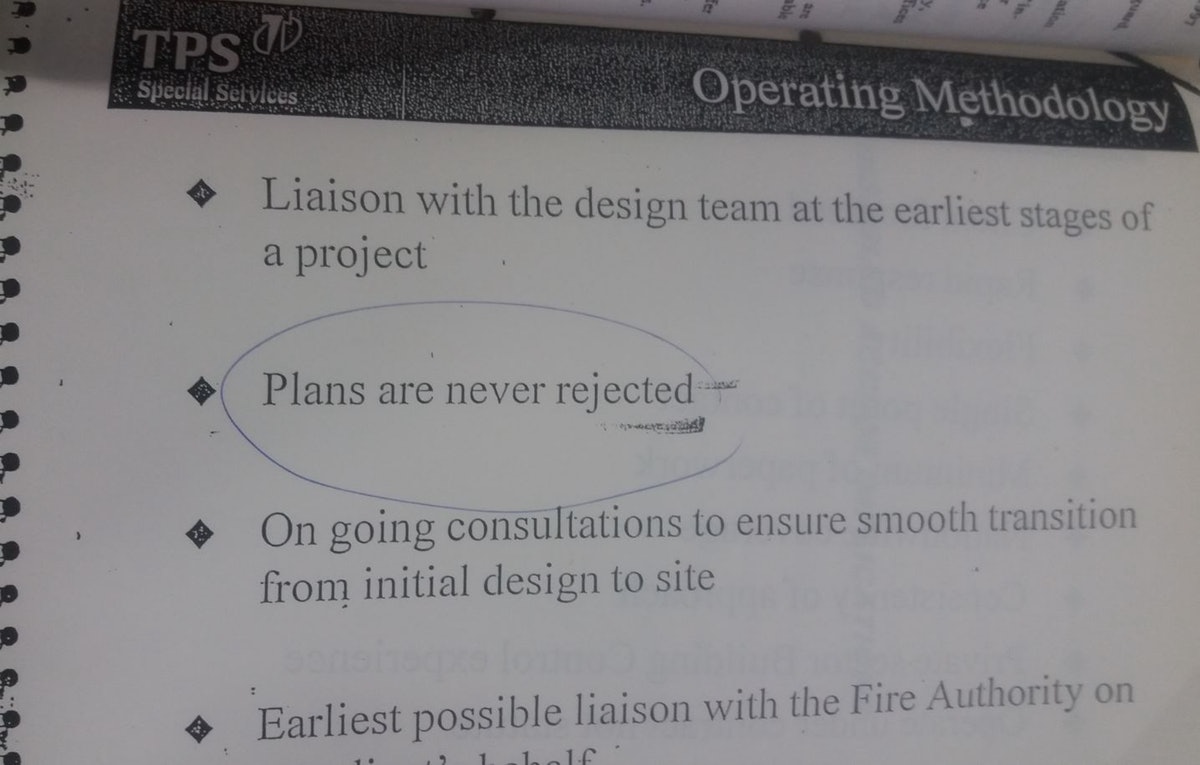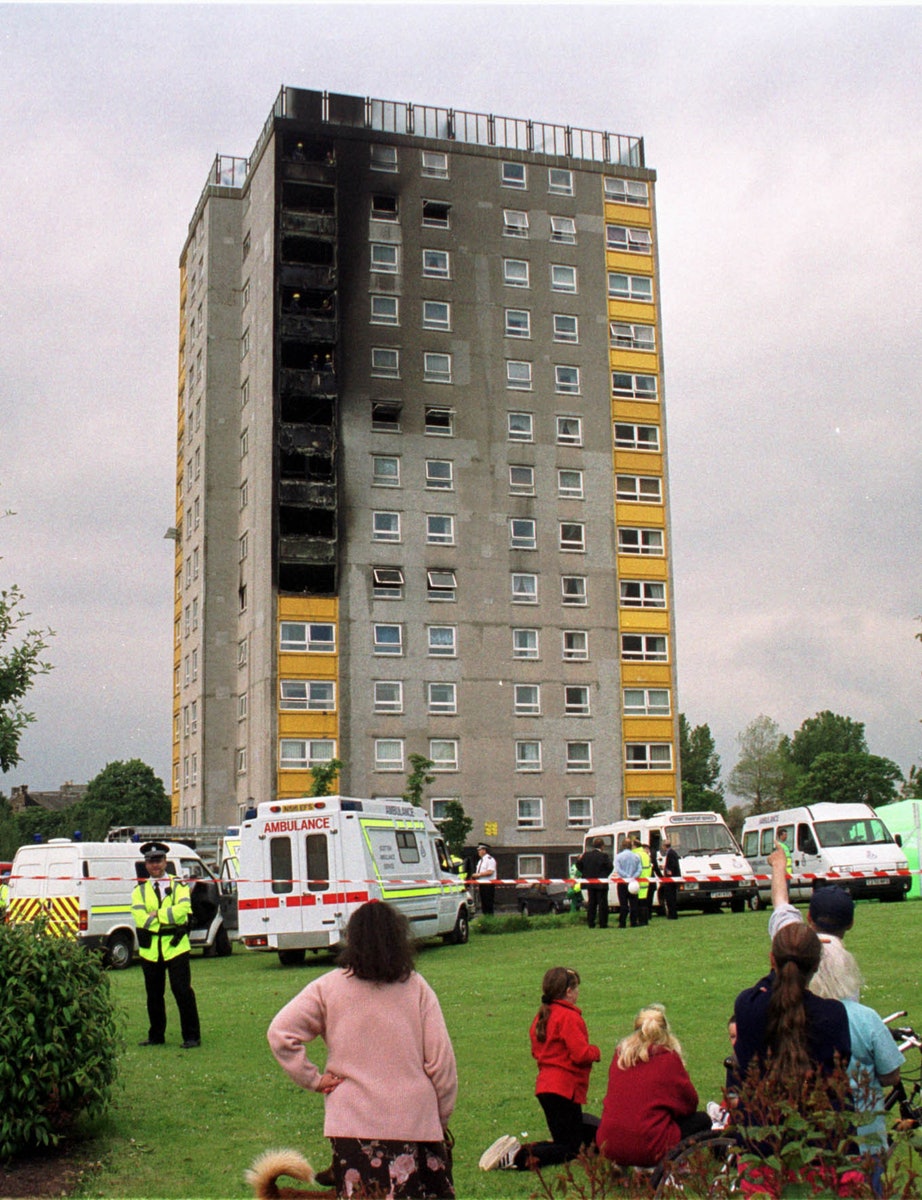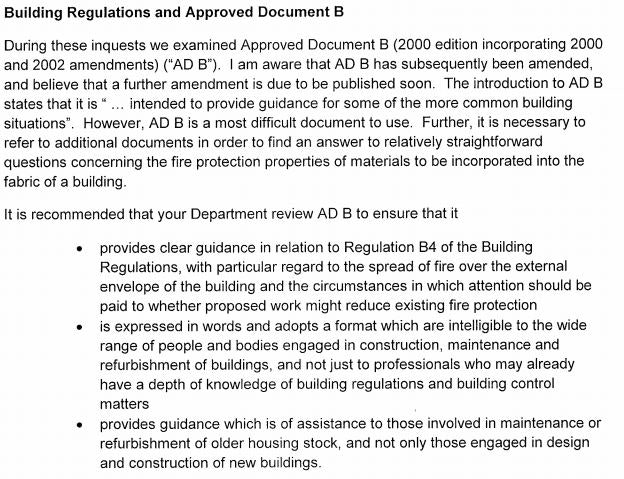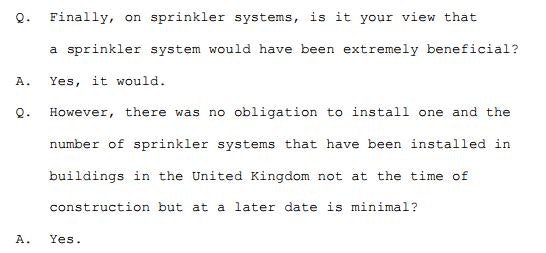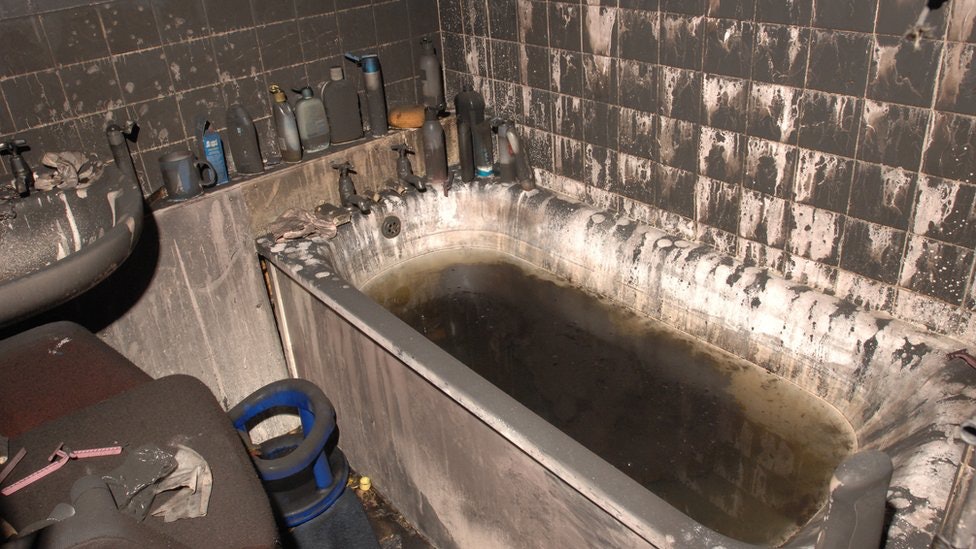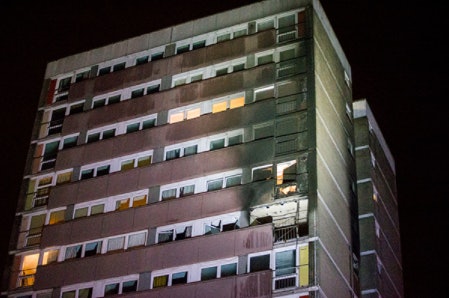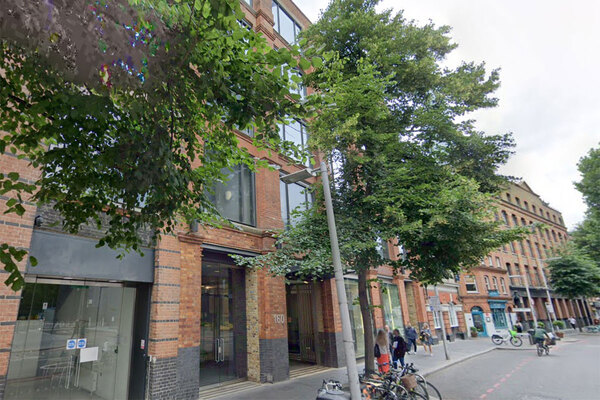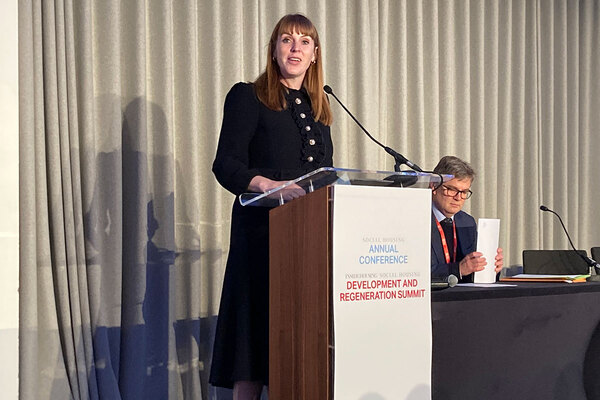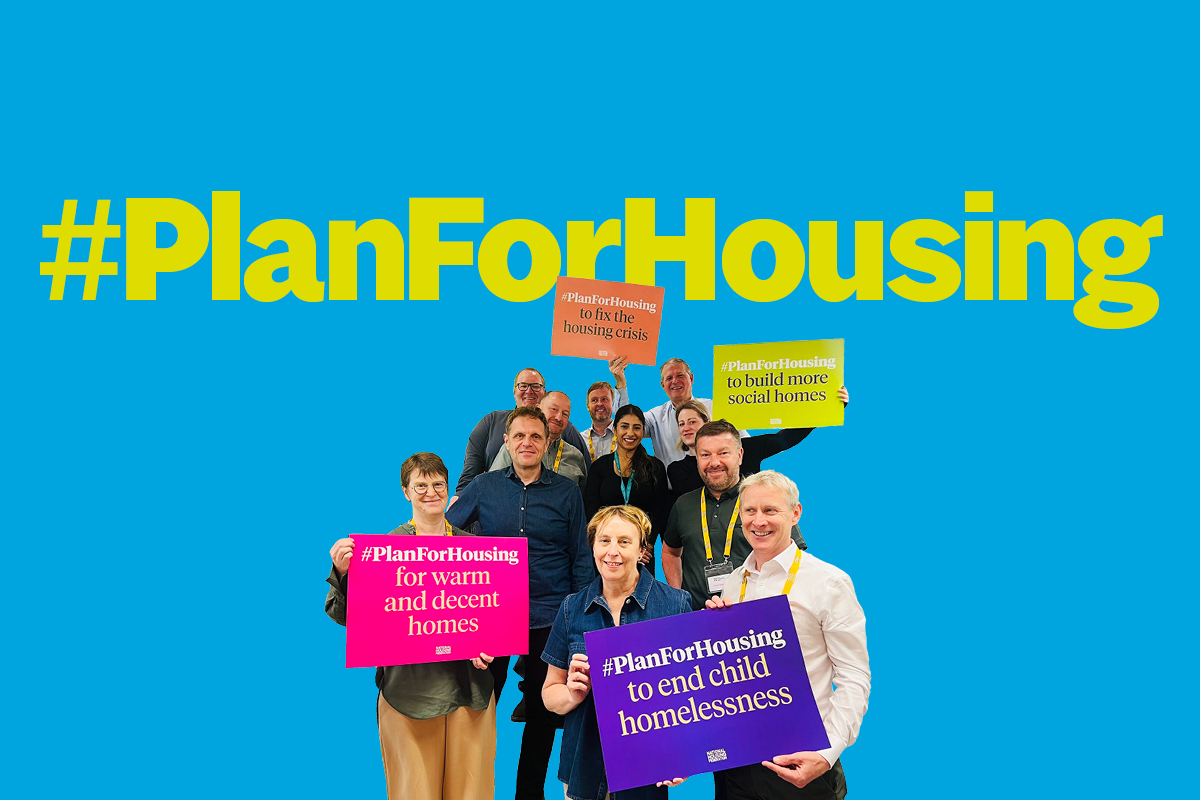The Paper Trail: the Failure of Building Regulations
Inside Housing has published The Paper Trail – a review of the failures in the system of building regulations in the build-up to the Grenfell Tower disaster. It follows a previous paper trail investigation, published in August, examining the build-up to the fire in Kensington and Chelsea.
“My understanding is the cladding in question, this flammable cladding which is banned in Europe and the US, is also banned here.”
Philip Hammond, chancellor of the exchequer,
18 June 2017
JUST over nine months on from the fire which destroyed Grenfell Tower, the UK remains in crisis.
The dangerous cladding has been found on almost 300 social housing tower blocks and an unknown number of private blocks, hotels, hospitals and schools up and down the country.
And behind the scenes, an almighty row is underway over who is to blame.
Four days after the fire, chancellor Philip Hammond took to prime-time BBC to insist the cladding used on Grenfell was “banned”. Since then, government officials have repeatedly said the material does not comply with building regulations and never did.
Contractors, insurance companies and builders claim its use was permitted. Both sides continue to argue the other should pick up the bill.
While this messy stalemate continues, the people who live in some of England’s high rises continue to sleep every night knowing a highly flammable plastic is attached to their walls.
Alongside this battle, the official review of building regulations commissioned by government is accused of signalling it will not go far enough to make the changes necessary to ensure buildings are kept safe.
Ahead of the release of its full report, expected in May, Inside Housing has spent months gathering together documents and interviewing experts from across the built environment sector to try and explain this debate.
This story is split into three sections.
First, an examination of the guidance which appeared to permit the dangerous cladding used on Grenfell.
Second, an in-depth look at how regulations were slowly weakened to permit untested combinations of flammable material to be installed on the outside of many of the country’s high rises.
And finally, the story of how an obsession with deregulation meant the warning signs of looming disaster were missed.
We begin with three paragraphs amid the 172-pages of official government guidance at the heart of much of the debate: Approved Document B.
Was the cladding legal?
By Pete Apps
THE debate about whether or not the cladding on Grenfell was legal is critical and far from settled.
At the time of writing, the exact same type of material is wrapped around at least 257 residential tower blocks in the UK. And these are just the buildings which have been identified. We may never know the full scale of its use across all sectors, with no means to compel private building owners to carry out or report tests.
The progress of removal work has been glacial. Part of this is about capacity. Part of it is about money. But part of it is because of the ongoing dispute about what the regulations did and didn’t permit.
So what is the answer?
This is, in fact, a surprisingly complex question. It certainly isn't as simple as Philip Hammond led us to believe on The Andrew Marr Show. At the very least, the official guidance was drafted loosely enough to convince large parts of the industry a material which has been shown to be deadly was entirely legal.
The cladding
The first point to clarify is exactly what we're talking about. In the myriad coverage of Grenfell the word ‘cladding’ has become a little confused.
To be specific, in this section we are interested only in the aluminium composite sheets stuck to the exterior of the building.
On Grenfell, these consisted of two 0.5mm-thick aluminium sheets fixed to a 6mm-thick core of polyethylene, manufactured by Arconic under the Reynobond brand.
“A kilogram of polyethylene is like about one-and-a-half litres of petrol.”
On Grenfell, these metal sheets were installed in front of insulation made of a plastic called polyisocyanurate, which was attached flush to the walls. In between the two was a cavity gap, there to keep the insulation dry.
It is beyond doubt that these panels are dangerous. This is what Tony Enright, fire safety engineer, said about the material in evidence to an Australian committee investigating a tower block fire linked to a similar material in 2014:
“A kilogram of polyethylene is like about one-and-a-bit, one-and-a-half litres of petrol. If you look at a one metre by one metre square section [of cladding] that will have about three kilograms, the equivalent of about five litres of petrol.”
In government tests after the fire, the panels failed with every combination of insulation it was tested with – even under lab conditions and with fire barriers three times stronger than the legal minimum commonly used in the industry. In the specific combination used on Grenfell, flames ripped through a nine metre rig in less than 10 minutes. Inside Housing has seen unreleased video footage of this testing and it is horrifying.
You might think then that a sensible system of building regulations would simply ban its use. But in the UK, it is not so simple.
What the regulations say
Since the mid-1980s, English building regulations have been based on what is known as a ‘performance-based’ system. This means that rather than setting out prescriptive rules or lists of banned materials, the regulations outline broad outcomes which buildings must achieve. It is then, theoretically, up to the industry to decide how to meet these standards.
This change, introduced by Margaret Thatcher's government in 1985, swept away 306 pages of building regulations and replaced them with just 24.
The current version of these standards is set out in The Building Regulations 2010, available here. In terms of fire spread across the outside of a building it is wrapped up in one sentence, unchanged since its introduction in the 1980s, here:
On the face of it, this aluminium cladding does not meet this standard. But the regulations are not the end of the story.
Approved Document B
Performance-based regulations create uncertainty. While the industry likes the freedom to innovate they provide, it also wants to know what it needs to do to comply.
This is where ‘approved documents’ come in. They are the government's official explanation of how to meet the requirements of the regulations. It is established as a legal principle that no one can be held liable for breaching regulations if they meet the standards in the approved documents. For fire safety, the relevant document is Approved Document B.
The relevant passages for this debate are three paragraphs in Section 12, which deal with the construction of external walls. Essentially, these set out two routes for checking whether materials used on high rises are acceptable.
The first of these is known in the industry as ‘the linear route’ and says effectively that the materials used must meet certain standards. If these standards are met, that's the end of the conversation – they are acceptable for use.
The second route is for materials which do not meet these standards. These, the document says, must undergo large-scale fire safety tests – a process we will examine in the next section. But first, we must consider the linear route.
In paragraphs 12.6 and 12.7 the document sets standards for external walls and insulation. It is in these two paragraphs where all the debate centres.
“These paragraphs will be the most litigated in English legal history,” says one senior industry figure.
These two standards are totally different. Both are set out in a document published by the British Standards Institution titled British Standard (BS) 476. This is not freely available online, but Inside Housing has obtained a copy.
Limited combustibility, the standard for insulation, requires materials to survive in a 750°C furnace for two hours. This is a rigorous test: it will burn almost all plastics, and would certainly have destroyed the cladding used on Grenfell.
But the other standard, Class 0, is much easier to pass. It requires a pass on two tests: the “surface spread of flame” and "fire propagation". The first test involves applying heat to a rectangular sample of the material for ten minutes. If flames travel less than 165mm across the sample, the material passes. The second involves testing the heat released when the material is placed into a burn chamber for 20 minutes, but again it is the surface of the material which is exposed.
This means material with a non-flammable surface – such as aluminium – can pass, even if what sits behind it is effectively solid petrol.
What standard was the cladding on Grenfell?
The polyethylene-cored ACM used on Grenfell, and apparently present on hundreds of other buildings, clearly met this standard of Class 0. In 2008, the British Board of Agrément – which issues certificates for materials used in the UK – issued one confirming Reynobond aluminium and polyethylene panels as Class 0.
So, the crucial question becomes which paragraph of the building regulations applied to the cladding.
If it was the section on ‘external walls’ then use of the material was perfectly legal. If it was the section on ‘insulation’ then it was not. This is the debate which divides the building industry from government.
The industry's view
Many figures in the industry believe the regulations permitted Class 0 cladding. Senior figures in two major building materials companies have told Inside Housing that this was their view before the fire.
“The use of [aluminium composite material] cladding was a common practice in the UK prior to the Grenfell disaster.”
This is also the reason insurers have refused to pay out where buildings need the material removed.
“The use of [aluminium composite material] cladding was a common practice in the UK prior to the Grenfell disaster,” BLP Insurance wrote in a letter, seen by Inside Housing, to leaseholders of a block in Slough. “Indeed the approved building inspector... confirmed the cladding was installed in accordance with requirements.”
In fact, Sir Ken Knight, the government's fire advisor from 2007 to 2013 and chair of its independent expert advisory panel set up in the aftermath of Grenfell, signed a document in 2014 which certified another polyethylene-cored aluminium product as Class 0.
Sir Ken would not have signed these documents personally – as chair of Warrington Certification's impartiality committee, his signature was used on all of its certificates. A spokesperson for Exova explains that this certificate was simply for surface spread of flame, and a limited combustibility rating was also necessary for compliance. But that is not obvious from the document.
Indeed, in the years before Grenfell, it appears the industry believed the non-flammable surface on composite panels was enough to protect buildings.
“There is a flaw in people's thinking about how materials will behave when exposed to flame.”
At another tower block fire in west London in August 2016, composite window panels came apart to expose plywood and polystyrene to a blaze which tore up the side of the block. The fire was not fatal, but it was a warning sign.
After Grenfell, Michael Carlish, the project manager who led this refurbishment work, spoke out to warn the industry's thinking on panels was “flawed”.
“There is a flaw in people's thinking about how materials will behave when exposed to flame,” he told Inside Housing. “It’s not within the imagination of the [industry] that the panel can come away and expose the flammable materials behind.
“That means they are placing reliance on the covering material, and not thinking about the full additional fire load they are adding to the building.”
When buildings are refurbished on a design-and-build basis, the contractors are responsible for design. If they have entered a low bid to win a public procurement, they are likely to be looking to strip out cost where possible.
In this context, faced with a choice between two materials, and told both complied with building regulations, the incentive is to go for the cheaper one.
As we will see later, there was ample evidence the product posed a risk.
But the guidance was loose enough that it relied on the industry to see this, rather than making it clear that it was illegal.
The government's view
The government's view has shifted after Grenfell.
In 1999, aluminium window panels assisted a fire in ripping up the outside of Garnock Court, a tower block in Irvine, Scotland, killing one man. At a committee hearing then housing minister Nick Raynsford was asked what standard external cladding panels should meet under building regulations. He said Class 0.
When the committee reported back, they were also clear that this was the standard the regulations set. The report they published, available here, said:
“External surfaces (and hence cladding) more than 20 metres from ground level should be ‘Class O’, to reduce the risk of fire at heights which are difficult to reach from firefighting operations on the ground.”
This was never contradicted by a later government.
In fact, after six people died in the Lakanal House fire in south London in 2009, Brian Martin, the civil servant with primary responsibility for Approved Document B, was asked what standard panels on the outside of a high-rise should meet. He also said Class 0.
But in the aftermath of Grenfell, this suddenly changed.
“The government is playing Humpty Dumpty with words.”
On 22 June, just eight days after the fire, the Ministry of Housing, Communities and Local Government wrote to social landlords claiming the standard for cladding was limited combustibility.
It said the plastic polyethylene in between the aluminium sheets was “filler” and therefore covered by Paragraph 12.7 of the Approved Document, which references “insulation, filler material... etc”.
“For the avoidance of doubt,” wrote Melanie Dawes, permanent secretary for the Ministry of Housing, Communities and Local Government, “the core (filler) within an aluminium composite material (ACM) is an ‘insulation material/product’, ‘insulation product’, and/or ‘filler material’ as referred to in Paragraph 12.7... of Approved Document B.”
Since then the government has been resolute in all its public statements that regulations demanded cladding be the higher standard of limited combustibility.
As a spokesperson tells Inside Housing: “As we have said repeatedly, it is our view that Class 0 ACM panels with a polyethylene core would not meet the limited combustibility requirements set out in building regulations guidance for buildings above 18 metres in height.”
But this standard is for insulation, and it had never made public before the fire its belief that this applied to cladding.
Who is right?
Arnold Tarling, a chartered surveyor at Hindwoods, gives the government's argument short shrift. Filler, he says, refers to material used to plug-up gaps in the insulation. It simply doesn't mean the interior of cladding.
Indeed, the purpose of cladding is not insulation. The material keeps the building dry and the plastic core is a sealant that sticks the two sheets together. It cannot insulate the building, as it is ventilated all round.
“The government is playing Humpty Dumpty with words,” says Mr Tarling. “They are trying to cover up the fact that the rules weren't tight enough in the first place.”
Jonathan Evans, chair of the technical committee at the Metal Cladding and Roofing Manufacturers Association (MCRMA) and chief executive of cladding company Ash & Lacy, says the government's interpretation of the guidance “is borne largely out of its determination to avoid admitting that its guidance prior to the Grenfell fire was inadequate, and any associated liability”.
There are some, though, who agree with the government's view. One senior and respected expert tells Inside Housing builders should not have read Paragraph 12.6 “in isolation” to justify using the cheaper ACM products present on Grenfell and elsewhere.
There is also a guidance document titled British Standard 9991, published by the British Standards Institution in 2016 (after the Grenfell refurbishment) which referred to the need for “cladding material” to be of limited combustibility.
But this does not have the governmental status of Approved Document B and arguably only goes to show that the official guidance should have included the specific word ‘cladding’ if it wanted that to be included in the limited combustibility category.
At the very least therefore, it seems the guidance was ambiguous.
Indeed, in January this year Kingspan – one of the largest insulation companies operating in the UK – put out a guide to building regulations saying there were now ”two interpretations” of Approved Document B: one that cladding should be Class 0 and the other that it should be limited combustibility. This was swiftly pulled after Inside Housing pointed out the inconsistency with the government's rhetoric.
You might think, then, that this would be the first loophole to be closed by the review of building regulations.
But it is so far absent from the independent review of building regulations, commissioned by government and led by Dame Judith Hackitt. So far, she has simply repeated the government interpretation of the guidance without challenge.
In a letter dated 5 March, she added the following footnote:
Indeed, in her interim report in December, she said: “There does not appear to be a single, simple reason to explain why so many buildings are affected.”
Well perhaps there is. On one common reading of the government's guidance it was perfectly legal.
This does not answer all the questions about Grenfell. For example, leaving the cladding aside, why was combustible insulation – unambiguously below the basic standard set in the guidance – used on the tower? To understand that, we must now consider the process of large-scale testing.
Testing times: the rise of combustible insulation
By Luke Barratt
Whether or not the aluminium cladding used on Grenfell was automatically approved by the guidance, the insulation definitely wasn't.
Behind its shining metal surface, the tower was coated in a foam insulation called Celotex RS5000. This is made from a plastic called polyisocyanurate and does not meet the standard of ‘limited combustibility’.
Indeed, detective superintendent Fiona McCormack, who is overseeing the criminal investigation into the fire, said that the insulation was “more flammable than the cladding”.
But use of this type of insulation has become extremely widespread.
The reason for this is the second route to compliance: large-scale testing.
Why are tests necessary?
Paragraph 12.5 of Approved Document B (right) permits manufacturers of this type of insulation to market it for use on high rises if they can pass large-scale tests known as ‘BS 8414’. These involve setting fire to a nine-metre high model wall to see if fire spreads up the side.
Such tests are almost invariably done at the Building Research Establishment's (BRE) laboratory in Watford, the only place in the UK with the necessary apparatus. The BRE, privatised in 1997, charges around £15,000 per test – although it represents a very small percentage of its income.
The test involves building a model wall in a ‘burn hall’ and lighting a fire underneath it.
A test is declared a failure if flames spread to the top of the wall within 30 minutes, or if the recorded temperature level recorded exceed 600°C for 30 seconds within the first 15 minutes.
These tests are shrouded in secrecy.
The results are considered ‘commercially confidential’ by the BRE and are released only at the manufacturer's discretion. This confidentiality is a requirement for all UKAS-accredited test laboratories.
But this means it is the manufacturer which is responsible for describing the system tested and the result.
The insulation used on Grenfell, Celotex's RS5000, passed one of these tests in 2014, when combined with cement fibre cladding – a material much less flammable than the cladding used on Grenfell.
But in January the manufacturer revealed that it had “inaccurately described” this test in its marketing of the product, and the test result was withdrawn. The exact inaccuracy is unknown.
It is also the manufacturer, not the BRE, which designs the test system and installs it.
After Grenfell, the government used BS 8414 tests as the mechanism to decide which cladding systems were safe and which were dangerous. These official tests were designed by Booth Muirie, a subsidiary of insulation manufacturer Kingspan.
The design selected used fire barriers three times stronger than the minimum prescribed by law and was criticised by rivals for the positioning of temperature monitors above fire barriers. Kingspan has since said the test was based on a design from 2016 over which it had no control.
Furthermore, the Fire Protection Association (FPA) has claimed the tests are not realistic compared to a real world environment.
The FPA – funded by the Association of British Insurers – is now conducting its own alternative procedures, adding windows to the model wall and using burning plastic to simulate more closely the effects of a cladding fire. Preliminary results are, according to the FPA, “significantly different” to the government's tests.
The BRE has defended the large-scale testing process in a lengthy statement given to Inside Housing. “Testing systems at large scale is a rigorous scientific way of testing performance and ultimately keeping people safe,” it says.
“There is not a single example of a fire in which a cladding system that has passed the BS 8414 test has resulted in fire spread on the outside of a building either here in the UK, in the UAE or in Australia where they also use this test method.”
This is true. But many combinations of material on buildings are not tested at all. Instead, they are cleared through the ‘desktop study’ route.
What is a desktop study and why is it controversial?
Cladding manufacturers argue that it would be impractical to test every possible combination.
Instead, the industry has been using desktop studies. These take data from materials previously tested and make a judgement as to whether a new combination would pass if it were tested.
There is no restriction on who can do these studies and neither the reports themselves nor their methodology are required to be made public.
We do know, based on the safety tests post-Grenfell, that at least one system (phenolic foam and fire-retardant aluminium panels) was passed by a desktop study, and failed a real world test.
Hannah Mansell, chair of the Passive Fire Protection Forum, tells Inside Housing: “Some of these desktop studies hold value because they've been undertaken by somebody who's competent enough to make that assessment, but my real feeling is that out there in the real wide world the inspectors also lack the ability to scrutinise these assessments properly.”
This is how materials are cleared for use today. Next we will turn to the story of how this position developed.
It is a story of steadily weakening regulations from the early 1990s, when combustibles were banned outright on high rises, through to the current position where their use has become commonplace.
The rise of combustibles
The 1992 version of Approved Document B banned combustible materials entirely.
Ironically, it was after the fatal fire at Garnock Court in Irvine, Scotland, in 1999 that this position was first weakened.
A parliamentary inquiry into the fire was conducted by the cross-party Environment, Transport and Regional Affairs Committee.
Three key witnesses to this inquiry were from the BRE: Peter Field, Sarah Colwell and Tony Morris.
When the inquiry began, however, the newly privatised BRE was in the middle of developing its large-scale testing method.
The minutes to the inquiry record that Mr Field believed testing would “certainly make sense” for all forms of cladding.
The inquiry prompted a review of Approved Document B, and the BRE's ‘Fire Note 9’ – a precursor to BS 8414 – was officially endorsed by the 2000 version of the government's guidance.
A spokesperson for the BRE adds that it is “categorically not the case” that the motivation in recommending full-scale fire testing was because of a vested interest in growing a market for this form of test. It says testing is important to “provide a full understanding of how an actual system will perform”.
Initially, however, this test was only to be used for ‘external surfaces’ that didn't meet the requirements of the approved document. There was still no way in for combustible insulation.
But changes to another part of the building regulations were about to make this a deeply lucrative opportunity for the plastic insulation industry.
Pressure to transform
AS global warming has risen up the political agenda, the UK and EU have signed up to several international treaties to reduce carbon emissions.
“The pressure to transform is set to increase in the coming years. Kingspan intends to influence this transformation, and is well placed to take advantage of all these developments.”
A directive in 2004 required member states to pass legislation stipulating the refurbishment of old buildings and better energy performance in new ones.
This was an opportunity for the insulation industry.
“Kingspan's range of products are well positioned to benefit from the general thrust of this directive,” Eugene Murtagh, chair of Kingspan, wrote in the company's annual report in 2006. “The pressure to transform is set to increase in the coming years. Kingspan intends to influence this transformation, and is well placed to take advantage of all these developments.”
This did refer to its environmental and offsite as well as its insulation business. A Kingspan spokesperson added: “As a market leader Kingspan’s influence is, and always has been, the quality and efficacy of its insulation solutions.”
At the same time, Celotex was thinking similar thoughts.
“With the government committed to Kyoto Protocol – the international treaty on climate change – Part L of the building regulations will be amended in the spring of 2006,” its 2005 results read. “Celotex Limited expects significant growth as a result and will continue a process of investment in buildings and equipment to cope with this growth.”
A spokesperson for the company tells Inside Housing: “Any manufacturer would consider the likely impacts in its market of regulatory changes (negative or positive), and it would be normal to communicate this to its shareholders and other stakeholders.”
The changes brought about by Part L effectively demanded the mass insulation of many old buildings. For Kingspan, Celotex, and other companies who mainly produce plastic-based insulation the ban on combustible insulation meant they could not tap in to this boom provided in the high-rise market. But Approved Document B was about to change again.
The way in
The 2000 version of the guidance stayed in place for six years, but discussions about changing it began as early as 2003, when John Prescott, the deputy prime minister, published a White Paper with this blurry photo on the cover.
The government's new plans for fire safety included changing Approved Document B to focus more on preventing fires in residential buildings. Ironically, the eventual guidance opened the door to desktop studies and combustible insulation.
The review began in 2005. According to the annual report of the Building Regulations Advisory Committee for 2004, the BRE organised all the initial meetings to discuss possible changes to Approved Document B. The BRE's website states that Mr Prescott appointed it to support the review.
When the new edition of Approved Document B went out for consultation, respondents were instructed to send their suggestions directly to the BRE office Watford, not the government offices in Westminster.
Various industry representatives and experts contributed to the new document, but because meetings are confidential it is impossible to know who contributed what.
What we can see is the document that went out for consultation, which helpfully crosses out passages that would be removed from Approved Document B and highlights passages that would be added.
First, it proposed removing the reference to large-scale tests from the external wall section.
Crucially, the change in wording to “full-scale test data” – the same as the wording in today's document – also loosened the test requirement. It is this exact wording that, Inside Housing understands, the government believes allows the use of desktop studies, because they use ‘test data’ despite not being tests themselves.
The final 2006 version of Approved Document B actually gave even more backing to the 8414 test, expanding its use to both external walls and insulation.
At no point during the consultation did the government draw attention to this change, and it never appeared in any summary of significant changes, despite the fact that it fundamentally altered the attitude of building regulations towards combustible insulation.
The BRE has said these changes “would have been compiled, scrutinised and approved by the Building Regulations Advisory Committee” which it was not represented on.
It added: “The stakeholders that engaged with this work never questioned our involvement. We are just one of a widespread array of stakeholders and experts who have been part of the evolution of the building regulations and associated guidance.”
The rise of desktop studies followed in the years after these changes. To understand the full picture here, it is important to note the process of building control, and how that has changed since the 1980s.
“A race to the bottom”
Building control plays a pivotal role when it comes to fire safety. Planning departments grant permission to builders to develop but it is building control officials who check that they've followed regulations. They are the main line of enforcement.
The task was part-privatised in 1985 by Margaret Thatcher, with private players allowed to compete with councils. Initially, the National House Building Council (NHBC), was the only private player to do so.
But in 1997, one of the last acts of the departing Conservative government was to broaden this competition. This led to a quick growth in new private companies.
Competition created a incentive not to fail schemes. Inside Housing has obtained a presentation from TPS Special Services, one of the first to be set up, promising plans would never be rejected.
Competition also stripped the local authority building control teams of staff and work.
It was in this context that building control officials were asked to interpret the newly loosened Approved Document B.
One cladding manufacturer tells Inside Housing: “It was a complete race to the bottom. They would approve everything just to get market share of building control.
“Once the door was opened in 2006 by that subtle change in wording in Approved Document B, the whole thing just unravelled, and [building control officers] signed off anything.”
The Building Control Alliance (BCA), which represents building control officials, moved to formalise the process of signing off combinations of material which had not been tested using “full test data” from other tests.
It did this through the guidance note, below, which recommended that desktop studies be done by laboratories accredited by the UKAS.
But even this position would get lighter.
In 2016, narrowly after the Grenfell refurbishment finished, the NHBC listed several common combinations of cladding and insulation which it believed could be signed off without the need for even a desktop study.
This included Celotex RS5000 insulation and ‘Class 0’ aluminium composite material cladding: the exact combination used on Grenfell.
This guidance was withdrawn after the fire. But it is evidence of the relaxed attitude of building control to the use of combustible materials in untested combinations before the disaster.
What now?
This section may have seemed like a history lesson, but these processes are still being followed today.
The BRE, which led the review of Approved Document B that introduced desktop studies and combustible insulation, is chairing the working group on 'Quality Assurance and Products' in the current review of regulations being led by Dame Judith Hackitt.
The BRE says its role in this regard “is to facilitate discussions and achieve consensus among the working group members”, and that it has “no vested interest with manufacturers, product suppliers, building owners, designers or similar”.
“Strategy: support 8414 tests. Support desktop studies.”
The insulation industry is heavily represented on the committee writing the new standard on desktop studies. Leaked notes from a meeting of Kingspan in September show the company has been following a “strategy” to support the continued use of desktop studies and testing.
The government has responded by pledging to redraft Approved Document B to formally provide for their use, with some restrictions.
This is how we reached the position we find ourselves in today. But none of this happened without warning. For the past two decades, anyone who chose to listen could hear the alarm bells ringing.
The missed warnings
By Sophie Barnes
These alarm bells have rung loud and clear, both through the evidence of key tower block fires and in warnings from experts across the years.
At each turn, the story is of missed opportunities.
To understand this picture properly, the first thing to understand is the devotion of successive governments to an ideology which has at times come ahead of calls to improve safety: deregulation.
Deregulation
Since the 1980s, governments of all colours have enthusiastically pursued a deregulation agenda. Margaret Thatcher famously led the way, replacing 306 pages of building regulations with 24, in a big bang to rival that in the financial sector.
Labour enthusiatically picked up the baton when it came to power in 1997. Tony Blair began a programme of “better regulation” and announced that no new regulation would be considered without a regulatory impact assessment being carried out. The ‘Better Regulation Task Force’ was set up to ‘reduce unnecessary regulatory and administrative burdens’ on businesses. This asked all government departments to simplify or abolish regulation in the areas for which they were responsible.
Then in 2010, the Conservative and Liberal Democrats coalition took power and the Cabinet Office's Cutting Red Tape initiative was born. Vince Cable, now Liberal Democrats leader, then business secretary, became chair of the committee.
“This coalition has a clear new year's resolution: to kill off the health and safety culture for good.”
The government introduced a ‘one in, one out’ rule - which ordered that whenever a regulation was introduced another had to be removed. In 2013, it became ‘one in, two out’ as the government adopted a mission statement of being “the first government ever to reduce regulation”.
In January 2012, David Cameron gave a speech where he made it his “new year's resolution” to “kill off the health and safety culture for good”.
In March 2016, as the final touches were being put on the refurbishment of Grenfell Tower, the government – now a Conservative majority – upped its target to ‘one in, three out’ and promised to save businesses £10bn by reducing regulation.
As Paul Everall, the civil servant who was head of building control between 1991 and 2005, says: “You shouldn't just attack advisors on this. It really was the culture we were in with the government.
“For the past 10 or 15 years we've had ministers who've been pressing for deregulation rather than regulation. We need a change in the culture in the government [to see] that regulation is not per se a bad thing.”
This philosophy has had a direct impact on fire safety.
Falling fire deaths
Numerous experts have told Inside Housing that when they approached government urging changes to fire safety guidance over the years, advisors were reluctant to back their call for change, pointing to the drop in fire deaths as evidence that all was fine.
There is, to be fair, no arguing with the numbers on this point. In the 12 months to March 1982, 755 people died in fires in England. With a few bumps, it decreased every year through to 2016/17 (the financial year which finished two months before Grenfell) when it hit a low of 262.
“It is sadly our view that fire safety is not a prime driver of design and tends to be neglected when it comes to procurement and construction.”
But under the government's own analysis, changes such as increasingly fire-resistant furniture (thanks at least in part to EU regulations), falling levels of smoking and reduced domestic chip pan use over the years have driven the fall in fatalities.
In August 2010, David Sugden, then chair of the Passive Fire Protection Forum (PFPF), wrote to the Department for Communities and Local Government (DCLG) with the following warning: “It is sadly our view that fire safety is not a prime driver of design and tends to be neglected when it comes to procurement and construction.”
It followed a three-year government-backed research project carried out by the PFPF that concluded in 2003 that fire protections were being installed poorly because the work was carried out by workers who had no fire safety training.
The forum also found that building jobs were being completed without any checks being made on the fire protection materials or quality of workmanship because there was no legal requirement to certify the work.
Mr Sugden says: “We found that in completing a job a contractor that was doing fire safety work was being asked for a certificate by the main contractor. Now, there is no such thing so they were producing spurious fire certificates and handing those to their client, and these were being accepted as proof that the work had been done. We also found that local authority building control officers were accepting these spurious certificates as proof.”
The forum recommended that the use of third party certificates for fire protection products and installers should be made mandatory.
But in response a DCLG civil servant said any major change in regulation had to go through the Cabinet Office, who would carry out a cost-benefit analysis.
“So at every stage when the industry has said you need to have tighter control of the products and the installation of those products we have failed to get it,” says Mr Sugden.
“The number of deaths in fires has been coming down very nicely. The [Cabinet Office] could not be convinced that there was sufficient danger to the public for major changes in regulation.”
Despite the lack of government action on making changes to the building regulations, exactly one year after the Lakanal House fire the then Department for Communities and Local Government did seek views on what changes needed to be made.
But the focus seemed to be on how to cut costs, rather than strengthen the regulations. Its letter seeking views from the fire sector stated: “Ministers have indicated that they would be particularly interested in views and suggestions about compliance with the building regulations. This is in response to concerns that lack of compliance undermines what the regulations seek to achieve. We are keen to ensure that savings are really delivered and that our achievements are real and not theoretical.
“Our work needs to be underpinned by robust evidence so that we can make the right choices and understand clearly the costs and benefits.”
MHCLG (formerly the DCLG) says this "letter... made clear that building regulations need to be managed and maintained carefully".
Hannah Mansell, who is the current chair of the PFPF as well as technical manager for the British Woodworking Federation (BWF), says in recent years the 'one in two out rule' has hampered progress. She adds: “They simply didn’t see that the number of people who were dying in fires was of significant enough numbers to pay attention to.”
For Ronnie King, an ex-firefighter with 20 years' experience as a chief fire officer under his belt and honorary secretary of the All Party Parliamentary Group on Fire Safety, this has been a source of frustration.
“It's a real frustration for someone who spent 41 years in the fire and rescue service in Yorkshire, London, Scotland and Wales, 20 of which were as a chief fire officer, who has brought out lifeless bodies of children from burning buildings, and who doesn't receive payment for his current role. But who does not appear to be listened to when guidance from government department officials seems to carry more sway.”
So what were the warning signs?
Overseas fires
On New Year's Eve 2015, the Address Downtown Hotel in Dubai burst into flames. A fire had broken out on the 20th floor of the 63-storey building and ripped up the side. Jonathan Gilliam, a CNN law-enforcement analyst in Dubai, said: “This is looking absolutely horrific. This is spreading very rapidly.” At one stage more than 40 storeys burned simultaneously.
There have been other, similar fires at high rises in Dubai. A report by architectural consultancy Probyn Miers in 2016 said: “It is widely suspected that the presence of combustible aluminium composite panels was responsible for the fire spreading alarmingly rapidly up the exterior of the Address... the Dubai fires involved polyethylene (LDPE) cores.”
The same material that was on Grenfell also caused a terrifying tower block fire at the Lacrosse Tower in Melbourne in 2014 and the Mermoz Tower in France in 2012.
All of these should have been evidence enough to government and contractors to think carefully about using this product so widely in the UK. But other warnings were closer to home.
Garnock Court
The blaze at Garnock Court in North Ayrshire in 1999, has been discussed in both of the sections above. It was one of the earliest warnings about the danger posed by cladding systems. This fire destroyed flats on nine floors of the 14-storey block, killing a disabled 55-year-old man and injuring five others including a 15-month old baby. It spread up the building via composite window panels, and reached the top in around 10 minutes.
We have seen above how this fire in fact opened the door to large-scale testing and eventually the widespread use of combustible insulation. But the warnings could instead have triggered the changes necessary to ensure it was the last time a disaster like this occurred.
In 1999, the House of Commons Environment, Transport and Regional Affairs Committee launched an inquiry into the Garnock Court fire and an earlier fire in 1991 that had broken out in Knowsley Heights in Liverpool.
“We do not believe that it should take a serious fire in which many people are killed before all reasonable steps are taken towards minimising the risks.”
Witnesses to the inquiry, including the Fire Brigades Union and cladding manufacturers, said the guidance in Approved Document B “may not be adequate for the purposes of ensuring the safety of external cladding systems in a fire”.
The chief concern raised by witnesses to the committee was the “risk of unexpectedly rapid fire spread involving these systems” which could create “disproportionate difficulties in firefighting” and “disproportionate damage to the building”.
Most importantly, the committee noted that concerns about the fire safety of external cladding systems “are not new”.
“Local authorities and [housing associations] should also be instructed to monitor existing cladding systems carefully.”
“We do not believe that it should take a serious fire in which many people arekilled before all reasonable steps are taken towards minimising the risks,” it concluded.
The House of Commons committee stated that all cladding systems should be required to either be “entirely non-combustible” or proven through full-scale testing not to pose an “unacceptable level of risk” in terms of fire spread.
As we have seen, this is not the way building regulations panned out.
But north of the border the story was different. Since 2005 Scottish building regulations have stated that cladding and insulation on high rise domestic buildings should either be made of non-combustible materials or the whole cladding system subject to a full scale fire test. These regulations applied not only to new high rise domestic buildings but also if an existing high rise domestic building was being re-clad.
Prior to 2005 cladding on high rise domestic buildings built or altered had to meet a Class 0 classification.
This appears to have been decisive. After Grenfell, 300 social housing towers in England were found to have potentially dangerous cladding. In Scotland there were none.
And this was not the only missed opportunity. The committee also had something to say about fire risk assessments.
“Competent fire safety assessors should then be called in to evaluate what work may be necessary to ensure that no undue risk is posed by any of these systems, with particular reference to the lessons learned from the fires at Knowsley Heights and Garnock Court,” the report said.
But before Grenfell, virtually all risk assessments carried out by housing associations and councils only considered common areas of the building area and paid no attention to the outside.
Indeed, Grenfell was cleared by risk assessor Carl Stokes before the blaze, who has since admitted to Inside Housing that he did not take the cladding into account in his assessment.
The committee called on the government to instruct social landlords to review their existing building stock “with a view to ascertaining how many multi-storey buildings are currently using external cladding systems”.
“Local authorities and [housing associations] should also be instructed to monitor existing cladding systems carefully to ensure that the materials from which they are constructed do not degrade over time and become less resistant to flame spread than they were at the time of construction,” the report says.
It appears these warnings about the danger of cladding simply fell by the wayside over the years. After Grenfell, no one in government had a list of the buildings which contained cladding. In the weeks after the fire, building owners scrambled to identify the materials on the outside. The advice, in 1999, to “monitor... carefully” was lost to the years.
Lakanal House, 2009
The fire that experts agree should have been the gamechanger for fire safety legislation broke out in Lakanal House in south London on the afternoon of 3 July 2009.
An electrical fault with a TV caused it to burst into flames and as the fire spread it burnt through a cladding panel on the outside of the wall, tearing up the outside of the building.
Less than two hours later six people were dead, including three children – one just three weeks old. The subsequent investigation revealed the window panels didn't even meet the Class 0 standard and there were suspended ceilings in the block that were a “significant fuel load”.
The coroner tasked with investigating the Lakanal House fire recommended the government review Approved Document B, describing it as “a most difficult document to use” in her report in 2013. This, then, was the opportunity to uncover the dangers with Class 0 material in cladding systems and the potential problems with large-scale tests and desktop studies.
But this review never took place. The All Party Parliamentary Group (APPG) on Fire Safety sent countless letters to various housing ministers calling for it. This included correspondence with successive governments since the building regulation guidance was last revised in 2006.
Since the Lakanal House inquest the APPG has specifically referred to the cladding on tower blocks and asked for a return to regulations which required one hour fire resistance for the external walls of buildings.
The group also urged various ministers to act on the Lakanal House coroner's recommendations. However, as Mr King points out: “The promised building regulations review, which was set to be completed in 2016/17, has not even commenced, with correspondence from ministers to this effect confirming such.”
As late as October 2016 then housing minister Gavin Barwell made clear in parliament the promised review of guidance still had not got underway.
“We have not set out any formal plans to review the building regulations as a whole, but we have publicly committed ourselves to reviewing Part B following the Lakanal House fire.”
Last year the BBC reported on leaked letters from the APPG. In one, sent in March 2014, the group wrote: “Surely… when you already have credible evidence to justify updating… the guidance… which will lead to saving of lives, you don't need to wait another three years in addition to the two already spent since the research findings were updated, in order to take action?
“As there are estimated to be another 4,000 older tower blocks in the UK, without automatic sprinkler protection, can we really afford to wait for another tragedy to occur before we amend this weakness?”
After further correspondence, Liberal Democrat MP Stephen Williams – who was then a junior minister in the Communities and Local Government department – replied: “I have neither seen nor heard anything that would suggest that consideration of these specific potential changes is urgent and I am not willing to disrupt the work of this department by asking that these matters are brought forward.”
In November 2016, Mr Barwell replied to a letter from the group to say his department had been looking at the regulations, and would make a statement “in due course”.
Five months later, Mr Barwell wrote to say he did “acknowledge that producing a statement on building regulations has taken longer than I had envisaged”.
In the end, the last significant change to Approved Document B before Grenfell
was in 2006, as described above.
One of the last calls to change this before Grenfell was in March 2017. Speaking to Inside Housing that month, Sam Webb, a pioneering architect who has long campaigned for fire safety said there was a “conflict” between a drive for better energy efficiency in homes and fire safety.
“We require buildings to be warmer to save energy, but there's a conflict between the materials that you use to do that and fire safety. If they’re using materials that will cut down on heating bills, that’s fine, but if it’s going to reduce your safety in a fire to a matter of minutes, that’s unacceptable.”
Three months later, flames ripped through the cladding system on the outside of Grenfell Tower in less than 15 minutes and 72 people were condemned to their deaths.
Sprinklers
The Lakanal House Inquiry also had something to say about sprinkler systems.
On day 35 of the inquiry, David Walker, a building surveyor with 29 years' experience, was asked to give expert evidence to the jury. Asked whether he believed sprinklers would have been beneficial, he was unequivocal, but also noted that their use around the UK was minimal.
Indeed, as the inquest heard, in 2006 regulations changed to require all new residential buildings over 30m to include sprinklers. But this was never applied retrospectively, to require the retrofitting of the life-saving devices at buildings like Lakanal and Grenfell. Over coming days, the inquest would hear that sprinkler systems were increasingly cheaper and more sophisticated – unlikely to cause any problems to the building outside of a fire.
Coroner Frances Kirkham therefore wrote to the Department for Communities and Local Government saying this:
But when the Lakanal House coroner made the same recommendation Eric Pickles, who was communities secretary at the time, said this was a matter for housing providers to consider, not government.
And in a parliamentary debate in 2010 Earl Attlee, the peer responding on behalf of the government, said:
“We recognise the significant role [sprinklers] can play in life and property protection and in public safety.
“[But] we do not consider that it is necessarily for the government to dictate to the business sector how to manage its business risks. If the fire industry or fire and rescue service consider that greater fire protection would be good for UK businesses, they should take the case directly to building owners rather than to government.”
“In other words there was no word of encouragement whatsoever, ‘it's not my problem, it’s theirs’,” says Mr King.
Even urging from a future government minister fell on deaf ears. Heather Wheeler, MP for South Derbyshire and now the minister responsible for homelessness, spoke in parliament in 2014 when she was a backbencher calling for sprinklers to be made mandatory in all new build developments.
She said: “Nobody wants people to die unnecessarily. We all know that in Derbyshire… the number of fires has been reduced by 50% in the past six years or so. That is a fantastic story, but the vulnerable people and vulnerable areas where such problems persist can be identified. The fact that sprinkler systems would deal with that absolutely overnight is overwhelming, and I recommend that the minister gives us some joyous news later in his contemplations about English building regulations.”
Despite all of this evidence, there were no changes to building regulations made.
In the same 2014 debate, then housing minister Brandon Lewis echoed the deregulatory philosophy described above.
He said: “In our commitment to be the first government to reduce regulation, we have introduced the one in, two out rule for regulation.
“The Department for Communities and Local Government [responsible for housing] has gone further and removed an even higher proportion of regulations. In that context, members will understand why we want to exhaust all non-regulatory options before we introduce new regulations.”
A MHCLG spokesman says: “We all want to make sure homes are safe for those who live in them.
“A number of fire protection measures are needed to provide a suitable standard of safety in a building. These can include smoke alarms, fire compartmentation and smoke control.”
However, it still says the decision on fitting sprinklers is one for building owners.
And without this push from government, in a climate of austerity before Grenfell, action was not forthcoming. In 2015, research by Inside Housing showed just 18 of 2,925 council-owned high-rise blocks in England had sprinklers fitted inside flats.
It is hoped in years to come, the current reviews do not go down as another missed warning. But the signs so far are not wholly encouraging.
Never Again
By Pete Apps, Sophie Barnes and Luke Barratt
Post-Grenfell, the stakes could not be higher. At least 300 tower blocks are known to be affected by dangerous cladding and insulation of some sort. The total number of buildings, across all sectors, is likely to be much, much higher.
“The scale of the issue is enormous I believe. It's not just in social housing blocks that were built in the 1970s, it's in every sector,” says Hannah Mansell of the PFPF. “The government actually needs to grab hold of this and really accept that they need to do it better this time rather than just putting another plaster over it.”
But change has not been forthcoming. Nine months on from the fire, all the building regulations described above remain entirely unchanged.
In response to some of Inside Housing's queries for this article, an MHCLG spokesperson says: “Nothing is more important than keeping people safe.
“That's why following the Grenfell Tower tragedy we asked Dame Judith Hackitt to undertake an independent review of building regulations and fire safety.”
But Dame Judith's review is so far demonstrating a familiar aversion to prescriptive regulation. So far she has resisted calls to seriously consider a straightforward ban on combustible materials.
This has prompted criticism from bodies including the Royal Institute of British Architects (RIBA) which says it is “essential” that there are “baseline prescriptive requirements in relation to matters such as the use of combustible materials”.
“We are not aware of any successful system of regulation internationally that does not have a significant prescriptive element,” the group added.
After all the missed warnings about sprinklers, there is also no movement on a government-led programme to install them. In fact, when Nottingham Council asked for £6m to install them in 13 tower blocks in September, the government refused, describing them as “additional, not essential”.
The issues also extend beyond cladding and insulation. Windows, and the panels installed beneath them, have led to two terrifying fires in high rises in the past two years, one in west London and one in Northern Ireland. Neither were deadly, but this should not be cause for complacency.
There are also concerns about the potential dangers posed by wooden balconies attached to the outside of buildings and car parks underneath them, exemplified by two fires over Christmas.
The interior of buildings must also be considered, as recent revelations over fire doors have exemplified.
This can feel like a giant challenge. But it is one that must be faced up to. Grenfell has shown the price of getting building regulations wrong.
Further reading:
Architects for Social Housing: The Truth About Grenfell
The River of Life blog on building regulations and Grenfell
Inside Housing fire safety campaign
Amendments and clarifications
- An early draft of this article referred to panels on Garnock Court as 'cladding' when 'window panels' is a more accurate description.
- A caption in section two said the combination of phenolic foam insulation and category two aluminium cladding failed in 24 minutes in official government tests, when in fact it failed in 28.
- The description of the 'Class 0' test in section one has been updated to include reference to the 'fire propagation test' which materials must also pass to receive a Class 0 rating.
Never Again campaign
Inside Housing has launched a campaign to improve fire safety following the Grenfell Tower fire
Never Again: campaign asks
Inside Housing is calling for immediate action to implement the learning from the Lakanal House fire, and a commitment to act – without delay – on learning from the Grenfell Tower tragedy as it becomes available.
LANDLORDS
- Take immediate action to check cladding and external panels on tower blocks and take prompt, appropriate action to remedy any problems
- Update risk assessments using an appropriate, qualified expert.
- Commit to renewing assessments annually and after major repair or cladding work is carried out
- Review and update evacuation policies and ‘stay put’ advice in light of risk assessments, and communicate clearly to residents
GOVERNMENT
- Provide urgent advice on the installation and upkeep of external insulation
- Update and clarify building regulations immediately – with a commitment to update if additional learning emerges at a later date from the Grenfell inquiry
- Fund the retrofitting of sprinkler systems in all tower blocks across the UK (except where there are specific structural reasons not to do so)
We will submit evidence from our research to the Grenfell public inquiry.
The inquiry should look at why opportunities to implement learning that could have prevented the fire were missed, in order to ensure similar opportunities are acted on in the future.
